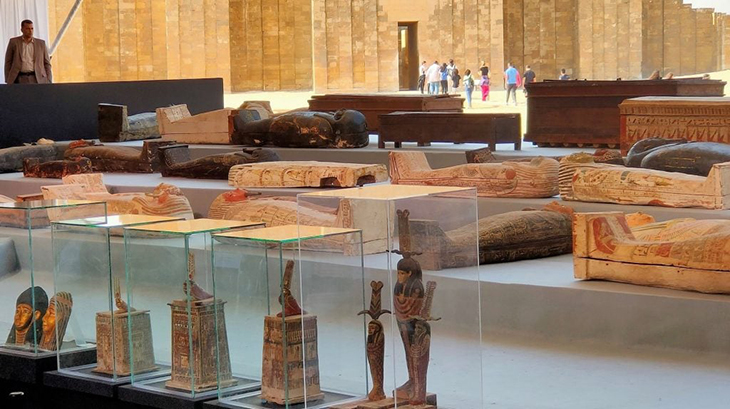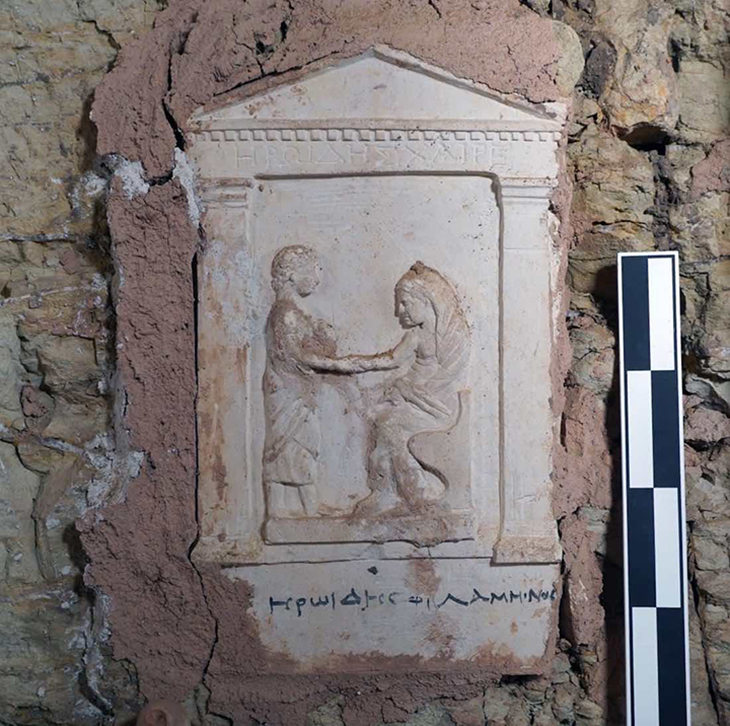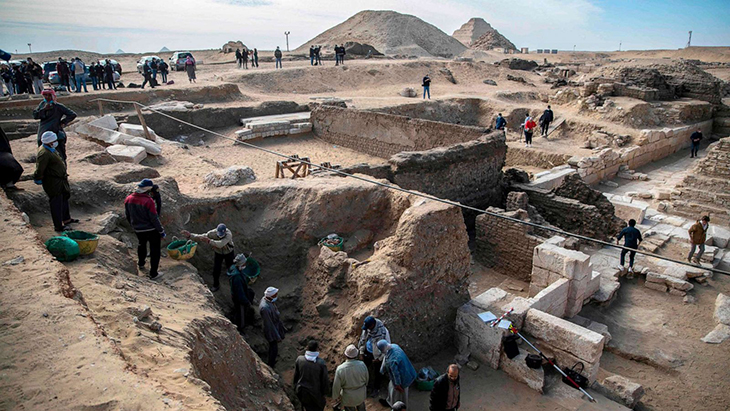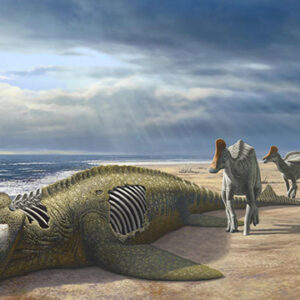
In the venerable sands of Saqqara, Egypt, archaeologists have unveiled a captivating narrative of ancient life. Through the diligent efforts of a collaborative expedition between Egyptian and Japanese scholars from Kanazawa University, a trove of historical treasures spanning 1,800 to 4,800 years has been unearthed within a series of rock tombs nestled within the Catacomb tombs of the Saqqara region.
The findings paint a vivid tableau of bygone eras, with vibrant mummy masks, intricate plates, stately statues, and captivating artwork offering glimpses into the beliefs, customs, and artistic prowess of ancient civilizations. Notably, among the discoveries stands a resplendent statue of Harpocrates, the revered child deity symbolizing silence, adding a nuanced layer to our understanding of religious practices of the time.
Dr. Mustafa Waziri, esteemed Secretary-General of the Supreme Council for Archaeology, elucidated the significance of these findings in a communication shared via the Ministry of Tourism and Heritage’s Facebook platform. His insights shed light on the architectural nuances of the unearthed cemetery, tracing its genesis back to the Second Dynasty era. The meticulous study of the tomb’s design and the discerning analysis of the ceramic artifacts within provide invaluable clues to the historical tapestry of Saqqara, enriching our comprehension of ancient Egyptian civilization.
“The burials that have been revealed consist of the remains of a human burial of a man with a colored mask, another burial of a young child, as well as a number of late and heroic burials with a coffin from the Eighteenth Family Era inside an alabaster plot in good condition,” said Dr. Mohamed Youssef, the Director General of Saqqara Archaeology. He also led the Egyptian side of the dig.

Ahram Online elaborated on the discovery, highlighting intricate designs that provide insight into the craftsmanship of ancient Egyptian builders. This finding offers a window into the lives of those who inhabited this ancient civilization.

Nozumo Kawai, who led the Japanese expedition, reported significant discoveries during their mission. The team unearthed two white terracotta statues depicting the goddess Isis and a child idol riding a bird. These statues were found to be adorned with remnants of green and white pigments.
In addition to the statues, the team uncovered fragments of two mascots representing Isis and the idol Oshabati, both crafted from limestone and featuring hieroglyphic inscriptions. Among the findings were a pottery saddle and fragments of pottery inscribed with hieratic symbols.
The archaeological recording and documentation of these artifacts have been successfully completed by the mission. Nozumo Kawai expressed optimism for future excavation seasons, anticipating further discoveries that may unveil additional secrets hidden within the Saqqara Archaeological Region. The team remains hopeful that ongoing efforts will shed more light on the historical significance of this site.
What are your thoughts? Please comment below and share this news!
True Activist / Report a typo


